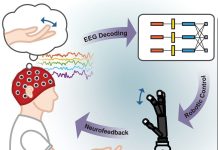
Ever found yourself in a situation where you had to make a quick choice, like crossing the street or picking between a red and a green apple?
Turns out, our brains are super smart and are always prepared for these types of decisions.
A recent study, shared in the journal “Cell Reports,” reveals that our brain readies itself for both choices even before we’ve made up our minds.
Jason Gallivan, one of the study’s authors and a brain scientist at Queen’s University in Canada, explains it like this: Imagine you’re looking at two apples, one red and one green. Even if you aren’t aware of it, your brain is already getting ready to pick either one.
Let’s take a more dynamic example. Think of a hockey player zooming across the ice. He spots two places to shoot the puck into the goal but must choose one quickly.
Inside his head, his brain is already geared up for both shots. If he picks one shot but then sees it’s blocked, his brain can quickly switch to the other option. Because both plans were already in place, he can make the decision faster. That’s pretty cool, right?
For a long time, brain experts wondered: do we decide our target first or plan our movement first? In a game like hockey, decisions are made super fast, so it’s tricky to figure out which comes first.
To solve this mystery, Gallivan and his team set up a fun experiment. They asked 16 people to move a cursor on a screen towards one of two targets.
The twist? They had to start moving the cursor before they knew which target to choose. It’s a bit like starting to walk before knowing which direction to go.
The interesting part? As these volunteers were doing the task, the cursor on the screen started to behave a little differently than their hand movement. The volunteers didn’t notice this change, but they naturally adjusted their hand movements to match the cursor’s new behavior.
By the end of the test, Gallivan and his team noticed something fascinating. The way the volunteers moved their hands wasn’t based on the position of the targets on the screen. Instead, it was an average of the paths needed to reach both targets.
This discovery suggests that our brain sees the world not just as things to look at but as actions to take.
In simpler terms, our brains are always thinking of “what can I do with this?” rather than just “what is this?” And while it’s cool to know our brains always have a backup plan, scientists are still trying to find out all the advantages of this.
Also, Gallivan’s team wants to use special brain scans in the future to get an even better look at how our brains make these plans.
So, next time you find yourself making a quick decision, remember: your brain’s got your back with a backup plan!



